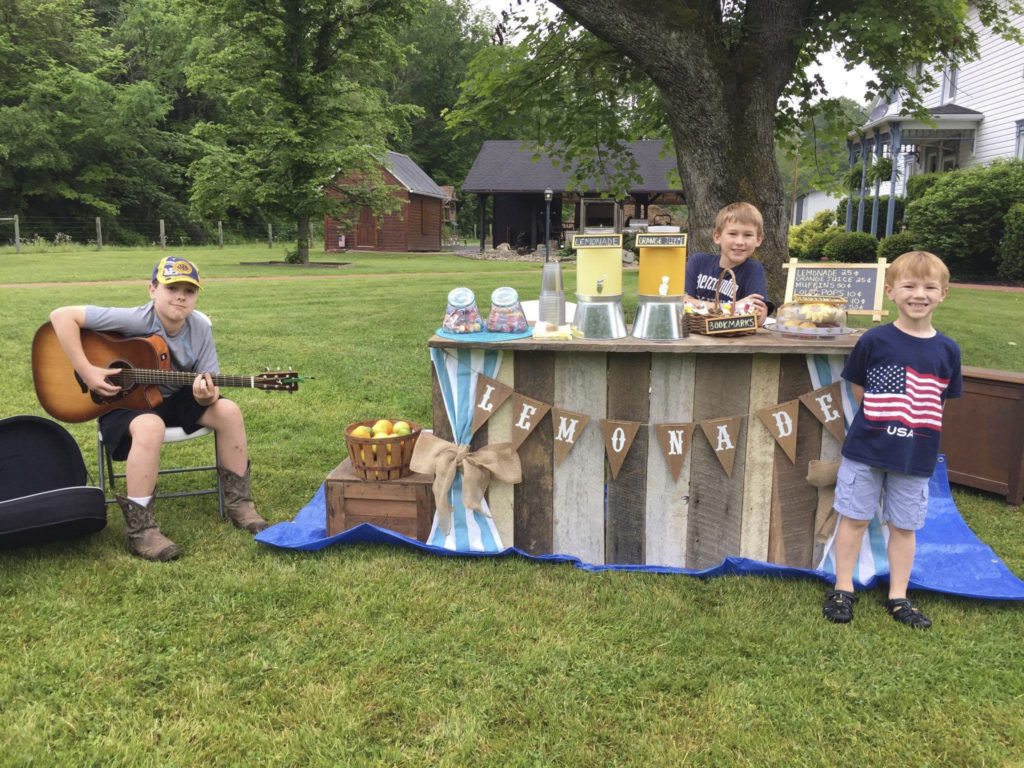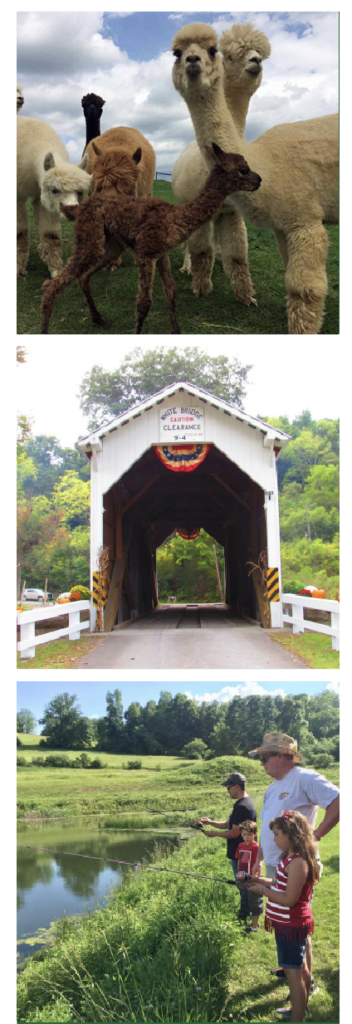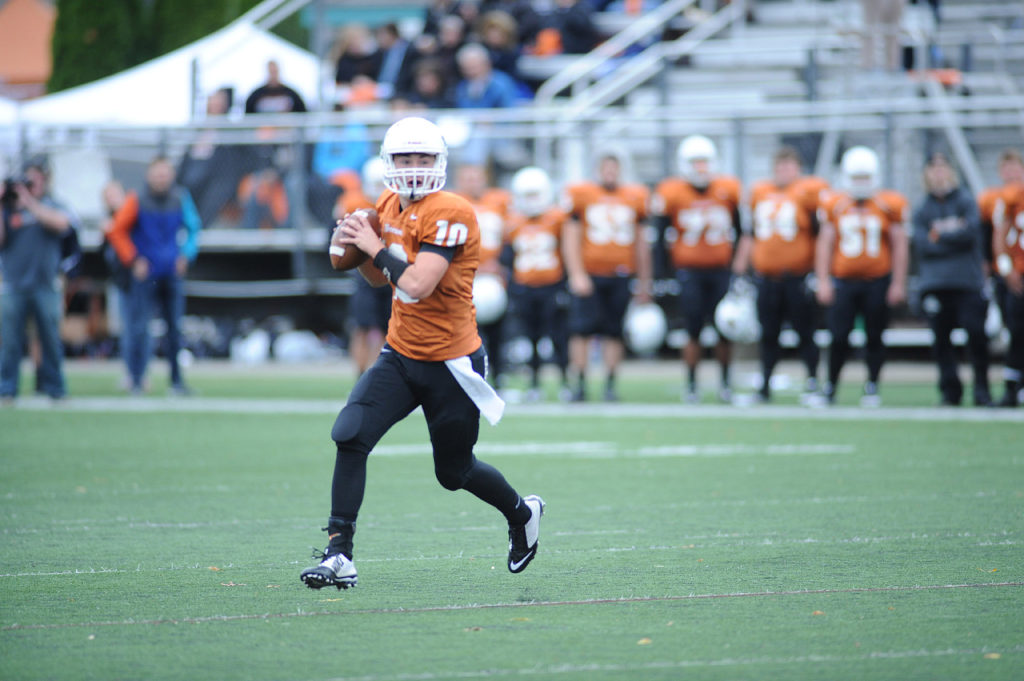 A Place to Call Home
A Place to Call Home
If you prefer a casual lifestyle, Greene County is your kind of place. Most of the residents enjoy small-town or country living, but they also like the idea of having the advantages of the big city close by. When people return to their homes at night, they feel secure in knowing that they are living in one of the most crime-free areas in the nation. Housing needs have grown in recent years and are in the midst of another growth spurt, but the area retains a warm and inviting neighborly feel.
Waynesburg is a quiet, charming county seat with a sense of its historical past and a solid future. City fathers in Waynesburg recognized their city’s possibilities and acted to preserve them in setting up the Historic District, a Victorian-style downtown area that encompasses 61 acres (almost 15 percent of the entire borough) and includes the campus of Waynesburg University. A day spent walking through the business and residential districts will offer many excellent examples of charming, turn-of-the-century architecture.
There are numerous small towns dotted across the beautiful rolling country side. Farms abound and the site of calves frolicking in fields is a common site each spring. Greene County offers a laid back, family friendly lifestyle.
For those contemplating the construction of a new home, there is a tax abatement program available to new residential construction and commercial construction. Under the program, real estate taxes related to improvements on the property will be abated for three years in resident instances and five years in commercial instances.
 A Rich Heritage History
A Rich Heritage History
An act of the Legislature passed on February 9, 1796, divided Washington County into two counties—the southern division became Greene County, named for Revolutionary War General Nathanael Greene. Permanent settlement began in Greene County in 1764 after the last major conflict with native Indians. Two forts were constructed in 1774—Jackson’s Fort and Garards Fort—which were built to protect the isolated homes in the area from attacks.
Colonel John Minor, a sponsor of the bill that gave birth to the county, is called the “Father of Greene County.” A board of trustees was authorized to buy a tract of land near the center of the county to establish a county seat and to build a courthouse and jail. According to a deed dated October 28, 1796, the trustees bought 158.5 acres of land called “Eden” from Thomas and Eleanor Slater for $2,376. The board named the new seat Waynesburg, after General “Mad” Anthony Wayne, to honor his success in leading the army in claiming the Northwest Territory (Ohio) in 1794.
On October 27, 1796, exactly 201 lots were offered for sale in the newly formed county seat through an advertisement in a Pittsburgh newspaper. Prices ranged from $5 to $139 per lot. A log courthouse and jail were erected (the courthouse still stands and has been fully restored). Apparently, the first store was established by William Crawford, who had purchased a “load” of goods from a settlement along the Monongahela River in the early 1800s and began trading. Transportation of merchandise from Baltimore and Philadelphia was a long and costly undertaking and the local residents had to pay ridiculously high prices for necessities like salt, tea, coffee, hardware and manufactured articles.
Mining and sheep ranching were the major industries of Greene County and were responsible for the county’s days of prosperity. Before World War II, Greene County was the largest producer of merino wool in the country. The steep terrain was better suited for sheep than cattle and there were said to be more sheep than people in the county at one time. Today, that history is celebrated with a Sheep and Fiber Fest that takes place each May. Live demonstrations, crafts, entertainment, and food abound, along with a breed pavilion, herding demonstration, and a “Sheep to Shawl” competition.
 A Season for All
A Season for All
Though things are always changing in Greene County, one thing that has stayed constant is its well-deserved reputation as a paradise for those who enjoy nature and its bounty. Whether it’s taking advantage of some of the best white-tailed deer hunting in the state or enjoying the area’s sparkling waters during fishing season, any outdoor enthusiast can find a good reason to slip away and enjoy the surroundings.
However, if your sport of choice takes place in a gym or on a field with hundreds or thousands of screaming fans, Greene County enjoys a rich athletic tradition at both the high school and college levels.
During the school year, five school districts provide nine months of excitement for its fans and supporters. Whether it’s cheering on a football team in the cool fall months, watching the grapplers fight it out on the mat during cold winter months, or heading out to the baseball and softball diamonds as part of the spring sports fan enjoy in the County’s athletic programs.
If your sporting tastes are more geared towards the collegiate level, Waynesburg University has you covered with its 18 varsity programs. If Friday nights don’t supply you with a big enough football fix, John F. Wiley Stadium brings the college football atmosphere to town as the Yellow Jackets battle their rivals in the Presidents’ Athletic Conference.
Waynesburg University has also made looking to the future a major part of its athletic focus. In recent years, women’s lacrosse and track and field have been added to more established programs like baseball, basketball, and football. The Yellow Jackets have also enjoyed the fruits of the school administration’s labor, which have materialized as major updates to the men’s basketball, women’s basketball, baseball and tennis facilities in recent year.
So whether you are a die-hard high school sports nut or prefer that your athletics take you back to your college days, Greene County can certainly satisfy the cravings of any fan. The only problems one may face is how to catch all the action with just 24 house in the day and what to do the long, hot months of summer vacation.
 Business, Industry & Agriculture – Breaking New Ground
Business, Industry & Agriculture – Breaking New Ground
Situated in the southwestern corner of Pennsylvania, Greene County is 60 minutes from downtown Pittsburgh and within 500 miles of six of the 10 largest metropolitan areas in the nation. These metropolitan areas have populations of one million or more and comprise 60 percent of the entire U.S. population. Products can be transferred via prime highways, air, rail or river. Business travelers can enjoy a commute with zero traffic lights between the Pittsburgh International Airport and Waynesburg.
The Marcellus Shale gas play lies directly beneath Greene County and has provided many opportunities to not only Greene County but most of the state. This growing industry and all of the supporting industries have brought many new companies and jobs to the area.
On a more industrial scale, industrial parks are strategically located and nestled in the gently rolling hills and pastoral splendor of the county and offer excellent access to major north-south and east-west interstate routes. The parks are designated Keystone Opportunity Zones, which provides almost total tax relief for employers located within a zone for specific period to time. The EverGreene Technology Park boosts a unique high-speed fiber connection, making it the perfect location for companies that require transfer of large amounts of data and scientific computations.
 Government
Government
As the county seat, Waynesburg is home to county government. The county is governed by a board of three County Commissioners. Other county government departments include Law and Order, Recreation, Planning and Development, Human Services, Finance, and Administration. There are boards within each department made up of interested citizens who service in advisory capacities, enhancing the public participation aspect of county operations.
Greene County is located in the 20th United States Congressional District, the 46th Pennsylvania Senate District, and the 50th Pennsylvania House District. There are 20 townships and six boroughs within the county. The county is divided into three magisterial districts for the operation of the lesser court system and there are two judges who sit on the Court of Common Pleas in Waynesburg. There are two state correctional facilities and a county jail.
Greene County area uses an enhanced emergency 911 system for fire, police, and ambulance services. There are several emergency ambulances services available within the area and a strong emergency response team.
Preparing for the Future
The County is divided into five school districts. A professional staff of teachers, support personnel, and administrators are dedicated to provide the finest educational programs possible to the students of the Central Greene School District. The instructional curriculum in the elementary schools emphasizes education in the basic skills. An enrichment program adds diversification to the curriculum, as does the intramural program.
The Greene County Career & Technology Center is supported by all five county school districts and state funds. The center is located on the campus of the Central Greene High School and Elementary School. It provides training in a number of fields, such as auto mechanics, accounting, cosmetology, drafting, food service, culinary arts, and welding. There is also a licensed practical nursing program for adults. The school serves the students from the five county school districts, as well as adult students.
Waynesburg University is a strong partner for growth and development. The University is a private, Christian, liberal arts institution founded by the Presbyterian Church in 1849. Charted by the Commonwealth of Pennsylvania in 1850 and fully accredited by the Middle State Association of Colleges and by the Department of Education of the Commonwealth of Pennsylvania, the University is in the 167th year. Waynesburg University offers more than 40 academic areas of study and has one of the most extensive service learning programs in the world. The University offers several bachelor’s degrees, a master’s of education degree and a master’s of science in nursing degree. An accelerated degree completion program for adults to complete a business degree and a Nursing Express Track are offered at three adult learning centers in the Pittsburgh area. Waynesburg University students average more than 1,100 hours per week of volunteer work. In addition, students and faculty build cultural understanding through international experiences and mission trips.
Along with our own Waynesburg University numerous other higher education choices lie within a 50-mile radius: Washington and Jefferson College in Washington, PA; West Virginia University in Morgantown, WV; California University in California, PA, and Penn State, Fayette Campus in Uniontown. In Pittsburgh, popular choices include the Pittsburgh Institute of Aeronautics, the Culinary Institute, and the University of Pittsburgh. Numerous small, private colleges, such as Grove City and Geneva, are also located within a four-hour drive.
 Something for Everyone
Something for Everyone
Discover Greene County, and discover a world of history, agri-tourism and outdoor recreation. Greene County is where northern charm and hospitality come together with a rich history and wild beauty. From the unique shopping and dining in historic Waynesburg, to the natural beauty of the trails and woodlands surrounding the Monongahela River, there’s something for everyone.
Enjoy the great outdoors with scenic bike rides, hiking, kayaking, golfing, hunting, and fishing. You can enjoy the simple pleasure of relaxing at a peaceful bed & breakfast or visiting one of our many farm tours. Tour the stately churches, distinguished homes, and quiet country roads scatter throughout the landscape.
With its abundant festivals, events, and activities, there is always something fun and interesting for the whole family to enjoy. Some of these include Rain Day and 50’s Fest & Car Cruise—right in downtown Waynesburg! Waynesburg is also home to the Greene County Fairgrounds. Here you can attend the Annual Buckin’ B Cattle Company Extreme Bull Riding, the Annual Sheep & Fiber Festival, and the Greene County Fair, just to name a few. Across from the Fairgrounds, you will find the Alpha Aquatics Center, featuring slides, a lazy river, everyone is sure to have a great time!
Waynesburg University hosts a full schedule of cultural events year-round. Some are held in the beautiful Center for the Performing Arts, located off Johnson Commons in the middle of campus. Art shows, musical performances, live theater, and guest speakers are just a few events to choose from. Most are free and open to the public.
There are two public libraries in the county, The Eva K. Bowlby Public Library on North West Street in Waynesburg and the Flenniken Library in Carmichaels. The Cornerstone Genealogical Society offers a large genealogical collection in its headquarters, located in the restored, original log courthouse on Greene Street in Waynesburg. Dating from 1796 and said to be the oldest log courthouse standing on its original site in the country, the original tow-story log structure is home to the Society’s collection of 3,000 books, more than 350 microfilms or early newspapers, numerous vertical files, and scrapbooks.
The Greene County Historical Society Museum, located on Old Route 21, three miles east of Waynesburg, is a 52-room structure that dates from 1861. It contains antique furnishing, tools, quilts, pottery, Indian relics, and other memorabilia. Visitors can follow nature trails, have a picnic lunch, and visit reconstructed log cabins on the 12-acre grounds. The last surviving stem engine of the Waynesburg and Washington Railroad can also be see outside the museum. The Harvest Festival, organized by the Historical Society, is held annually in October on the museum grounds and is the cornerstone of many popular events held there each year.
 The Best of Both Worlds Location
The Best of Both Worlds Location
Due north of Greene County, the mid-sized city of Washington is about 20 minutes away, and you can be in downtown Pittsburgh perusing the dinosaur exhibits at Carnegie Museum, cheering on the Penguins or watching ballet at the Benedum within an hour via Interstate 79. The interchange is just 1.5 miles east of Waynesburg Borough and the Pittsburgh International Airport is just one hour away.
To the south, Morgantown, WV is less than 20 miles down the road, via I-79, home of the West Virginia University Mountaineers, as well as numerous restaurants and shopping opportunities.
Route 21 East will take you to Uniontown in 40 minutes, where historic Route 40 cuts through the mountains to nearby Fort Necessity National Monument and Park. Another 30 minute drive will bring you to Connellsville where you can hop aboard an Amtrak train and chug through the scenic Cumberland Mountains to points southeast, including Washington D.C. in less than six hours.
To the west, in the West Virginia panhandle, the first stop is Wheeling, only 40 minutes from here via I-79 and I-70. I-79 and I-70 will then connect you to Holmes County, the heart of Amish Country, within three hours, and Cleveland in half a day.
Greene County is the kind of place where you want to raise a family and the closeness to several cities had made it an ideal home for commuters. The schools here are small enough for every child to get a great foundation, but also to have a chance to be an active player on a ball team, serve as an officer with their Student Council, or receive personal instruction in music and the arts.
City dwellers from nearby metropolitan areas often move to Greene County in retirement. The lifestyle here offers plenty of shopping, dining, and community service opportunities but less traffic and shorter lines at the grocery store. The bonus is that folks are close enough to maintain their ties with former colleagues and professional organizations.
Nestled within an area of our great nation where individuals continue to revere faith and family, Greene County is blessed to enjoy numerous congregational families. Residents come together in times of both need and joy, pulling together and spurring one another on in the journey of life.
Whether in towns and boroughs or enjoying a drive through the countryside, you’ll find houses of worship ranging from beautiful, historic structures built before the turn of the 20th century, to rented storefronts, house churches and modern new facilities.
Yet far more important than the physical structure of the building are the people who gather for worship each week in their own local congregations and who involve themselves in the service and work of ministry within Greene County.
Greene County is one of those rare places that has maintained an old-fashioned, small-town flavor through its 200-plus-year history. Many residents feel that the nearby metropolitan areas are a nice place to visit, but they are glad to call Greene County their home.
